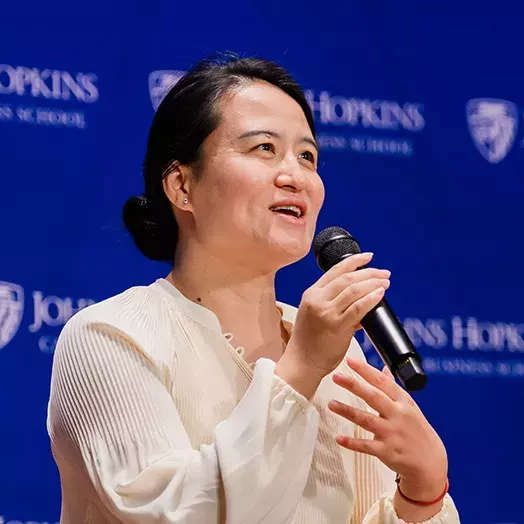The Johns Hopkins Human Capital Development Lab hosts conference to explore progress on the United Nation’s Sustainable Development Goals.

In human development, global progress is slowing, and gaps are widening
What to Read Next

research
Johns Hopkins research finds national decline in workplace well-beingMeasuring growth in terms of money, spending, or even population provides some insight and viewpoints on economic trends. But how can we measure growth in people and society?
This was a key question at the recent Strategic Management Society Special Conference, hosted by the Human Capital Development Lab at Johns Hopkins Carey Business School.
The conference featured, among others, United Nations Development Program Chief Statistician Yanchan Zhang. Since 1990, the U.N. has used the Human Development Index, or HDI, to help countries and stakeholders assess progress, identify gaps, and prioritize needs to improve the quality of life for all people. HDI measures gains in basic human needs of longevity, education, and income. In turn, these data are used to help measure progress toward the United Nation’s Sustainable Development Goals that are intended to promote peace and prosperity worldwide.
“After decades of progress, inequality between countries at the top and bottom ends of the HDI has reversed course,” said Zhang. “Since 2020, hard-won progress has begun to unravel. The gap between very high HDI countries and low HDI countries has been widening.”
The SMS special conference explored how corporate strategies and human capital development can advance the U.N.’s Sustainable Development Goals, particularly the goals to end poverty, achieve health and well-being, improve access to quality education, and promote decent work and economic growth.
According to Zhang, the COVID-19 pandemic and subsequent economic shocks led to a drop in HDI in 2020 and 2021. The decline was a first in the history of the index. While some HDI indicators are rebounding, Zhang continues to see troubling signs for human progress.
“Despite this recovery, the human development path has shifted downwards,” Zhang told the conference attendees. “The actual HDI path now is below the pre-2019 HDI trend, suggesting a setback in the broader advancement of human capabilities. This downward shift raises concerns that this human development loss may become permanent if we fail to catch up later on.”
Perhaps not surprisingly, Zhang notes that the changes in HDI are not equally distributed across all nations. Vast historical inequities remain worldwide. She said only half of the least developed countries showed signs of recovery, and that the poorest and most vulnerable populations of the global community are being left behind. That’s where progress toward the U.N. goals are lagging the most. Of 135 metrics, only 17 percent are on track to be achieved, while less than half, 48 percent, expect only moderate or marginal progress.
Of the rest, 18 percent are stagnant, and 17 percent have regressed below their 2015 baseline levels.
“The progress has not been very encouraging,” said Zhang. “The key message is the world is severely off-track.”
At the conclusion of the conference discussion, Professor Rick Smith, faculty director of the Human Capital Development Lab, commented, “The U.N. work on the Human Development Index highlights the importance of raising the awareness of these key issues, which is exactly what we aim to do in the Human Capital Development Lab.”
Please visit the Human Capital Development Lab website for more information.


